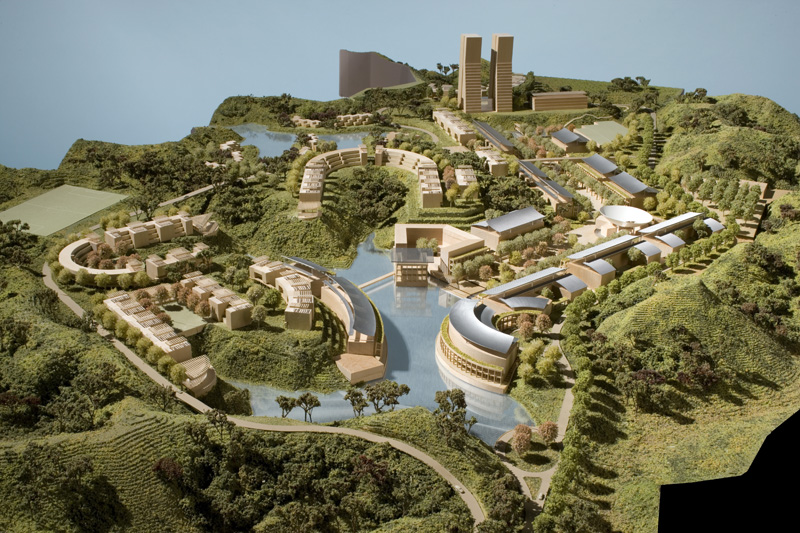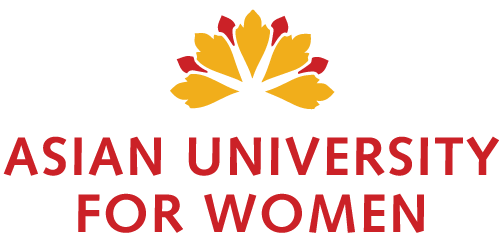Chittagong, Bangladesh
I am enormously pleased to welcome the Asian University for Women to Bangladesh and to the city of Chittagong. As it so happens, my own first experiment with microlending which eventually resulted in the creation of the Grameen Bank occurred just a few miles from the site chosen for this new university.
Our experience with microlending over the past several decades has amply demonstrated that given the opportunity, even the most powerless amongst us will rise to the occasion and strive to transform her own life. Higher education can be an escalator not only for personal success, but also for the capacity one needs to transform his or her wider society. It is in this context that I find the Asian University for Women initiative particularly important.”
Nobel Laureate Professor Muhammad Yunus, Founder & Managing Director, Grameen Bank, Bangladesh
Our Campus & Location
Our Campus
AUW is based in Chittagong, Bangladesh. It is a short walk or ride away from many shops, cafes, restaurants, parks, and places of worship including mosques, temples, and churches. Visitors may refer to our Welcome Packet for local recommendations on things to do, places to see, and tips for safety and security.

Rendering of the Permanent Campus
The permanent campus of AUW is planned for a beautiful 140-acre site within the Chittagong city limits, just north of the Foy’s Lake recreational area. The site consists of rolling hills, deep valleys, permanent and intermittent streams, and spectacular views toward the Bay of Bengal and the city. The site lies six kilometers north of the commercial center, approximately eight kilometers from Chittagong University, fifteen kilometers from the city’s new international airport, and is immediately adjacent to the Foy’s Lake recreational area. The land surrounding the AUW site represents one of the last undeveloped areas of Chittagong’s unique hilly landscape.
Much of the AUW site today is covered only with grasses and low bushes due to local harvesting of its vegetation. Yet, it can support a lush growth of trees, shrubs, and groundcover. One of the goals of the AUW campus design is to revegetate these hills as a strategy for preventing erosion and a means to re-establish a native ecology that is under threat throughout South Eastern Bangladesh. Part of AUW’s mandate is to demonstrate through its design and construction a more environmentally sustainable way of building. By locating in one of Bangladesh’s unique and endangered landscapes, and by applying local building traditions coupled with new technologies and design innovations, AUW has an opportunity to offer the country and region a new paradigm.

Rendering of the Permanent Campus
Environment and Social Impact Assessment & Plan for AUW Campus
Prior to beginning the construction of the permanent AUW campus, AUW has commissioned an Environmental and Social Impact Assessment and Environmental and Social Impact Plan for campus construction.
Any comments on the ESIA should be directed to Ms. Tapu Barua at: tapu.barua@auw.edu.bd
About Chittagong

Chittagong, Bangladesh is coastal city in Southeast Bangladesh that has a heritage of Muslim, Hindu, and Buddhist traditions. It is the second largest city in Bangladesh with a population of approximately four and a half million. The city has historically served as the principal center of cultural, social, and commercial exchange between this part of South Asia and the outside world.
Chittagong is a major port city that is well-connected to other major cities via air, road, and rail. The Hazrat Shah Amanat International Airport is twenty kilometers from AUW, while the city’s railway station is only four kilometers away, and Garibulla Shah Bus Station is less than one kilometer from AUW.
In addition to linking to major centers within Bangladesh, Chittagong’s international airport at Patenga offers direct connections to many major cities:
- Kolkata, India (40 minutes)
- Bangkok, Thailand (3.5 hours)
- Chiang Mai, Thailand (1.5 hours)
- Yangon, Myanmar (2 hours)
- Dubai (4.5 hours)
- Singapore (2 hours)
There are also flights available three days a week from New York to Chittagong via Bangkok or Chiang Mai.
Chittagong also has a thriving international community as well as culturally rich and diverse local population. Chittagong has a far less dense urban environment than Dhaka, which is a city of 12 million. It offers a less chaotic urban experience, a unique and still largely unspoiled landscape of rolling hills, and a large lake and recreational area—all within the city limits. Regionally, recreational areas abound with the beaches of Cox’s Bazaar 152 kilometers to the south and Rangamati and Kaptai Lake to the east in the Chittagong Hill Tracts.
The city of Chittagong, itself, straddles the divide between the low flat coastal plain of the Bay of Bengal and the Chittagong Hill Tracts whose peaks, near the Myanmar border, reach heights of 300 meters. Within Chittagong, the average elevation is only 10 meters above sea level. The undeveloped hilly region in the northern part of the city reaches maximum elevations of 75 meters above sea level.
The climate of the region is pleasant year-round with little humidity in summer (highs 85° F/29° C) and moderate temperatures in winter (lows 58-60° F/14-15° C). The city receives 2400 millimeters of rain per year. As elsewhere in Bangladesh, flooding from monsoon rains and cyclones can impact the lower lying regions of the city. The hilly parts of the city are little impacted by flooding, the exception being the potential for localized flooding when water run-off is restricted.
About Bangladesh

Bangladesh serves as an ideal context for the kind of innovation that AUW hopes to bring to the regional discourses on higher education, gender, and development. For the last several decades, Bangladesh has represented an international center for innovation in socio-economic development programs, ranging from the development of new models of microfinance to the development of Oral Rehydration Therapy, which has saved millions of lives each year across the developing world. The Grameen Bank microfinance initiative, providing credit to those who are too poor to qualify for loans from traditional banks, has proven to be a powerful poverty alleviation strategy now emulated around the world. Since 92% of Grameen borrowers are women, this endeavor has had a significant impact on the empowerment of women in Bangladesh. The Comilla Experiment of the 1960s brought out the importance of directly involving rural participants in the development process, and Bangladesh is now home to the Bangladesh Rural Advancement Committee (BRAC), the world’s largest NGO. The textile industry, also dominated by women workers numbering close to two million, now dominates the export sector. These are but a few of the many examples of powerful development models to have emerged from Bangladesh. It is noteworthy that the founders of both BRAC and Grameen Bank have served on AUW’s Bangladesh Board of Advisors and have provided guidance to the planning and development of this institution.
AUW enjoys support from the Government of Bangladesh and a network of industry and community leaders in Bangladesh. In 2004, the Prime Minister in power, Begum Khaleda Zia, officially granted over 100 acres of land to AUW in Chittagong. At the groundbreaking ceremony, which attracted over 10,000 people, Prime Minister Zia spoke about the importance of women’s higher education and called the event historic not only for the women of Bangladesh but also for the women of all of Asia. AUW enjoys the support of high level members of both political parties in Bangladesh. The Charter of the Asian University for Women ratified and granted to AUW by the Government of Bangladesh is unique in the region, and it assures AUW exceptional rights and a status similar to international organizations like the United Nations. Furthermore, the AUW Bangladesh Board of Advisors, consisting of prominent business, academic and civic leaders in Bangladesh, has consistently provided the AUW administration with local guidance to harness community and national support for the University.
